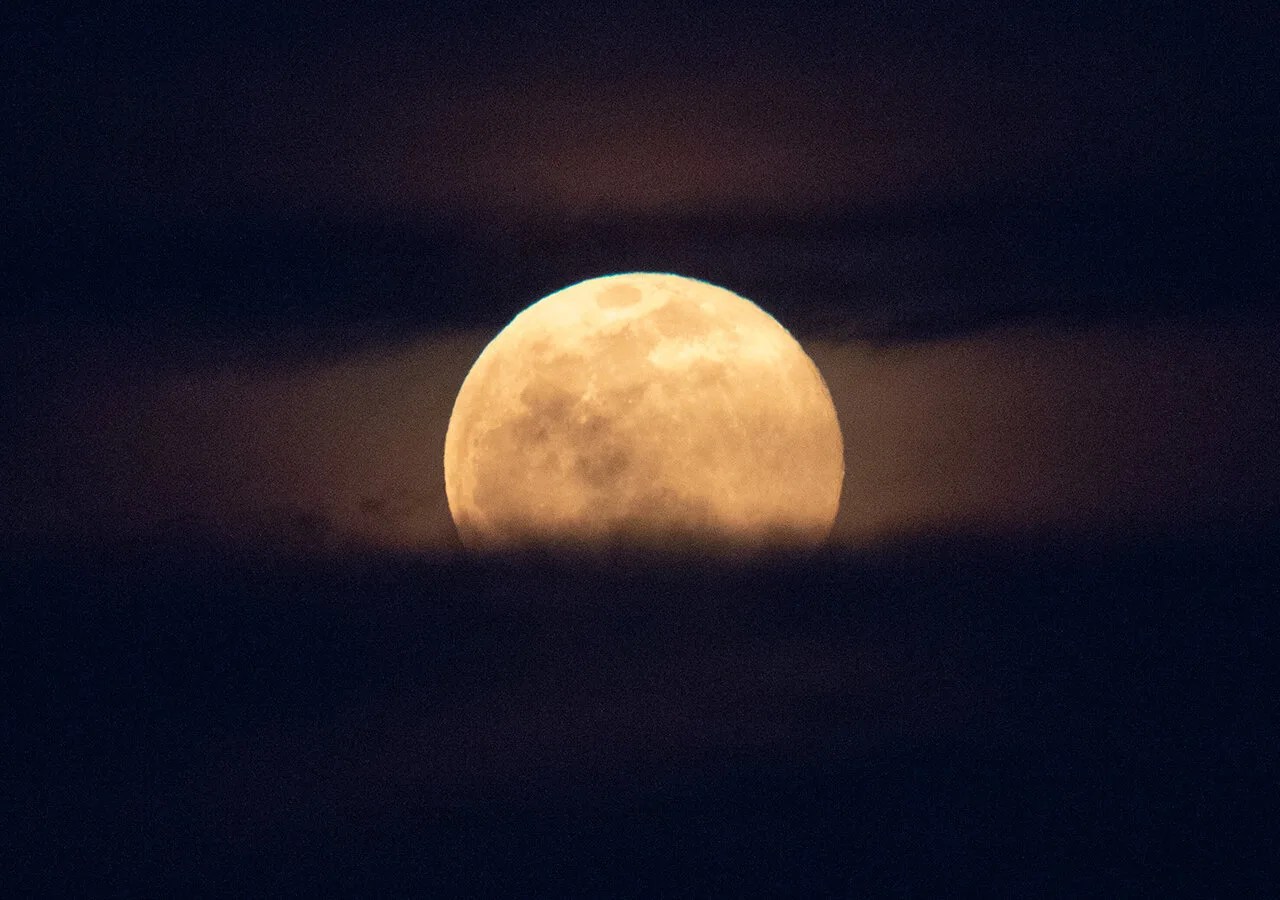
NASA/Joel Kowsky
The Next Full Moon is a Supermoon; the Hunter's Moon; the Travel Moon, the Dying Grass Moon, or the Sanguine or Blood Moon; the start of Sukkoth; Sharad Purnima, Kumara Purnima, Kojagari Purnima, Navanna Purnima Kojagrat Purnima, or Kaumudi Purnima; the end of Vassa and Pavarana; the Thadingyut Festival Moon; the end of the Phaung Daw U Pagoda Festival; and Vap Poya.
The next full Moon will be Thursday morning, Oct. 17, 2024, at 7:26 a.m. EDT. This will be late Wednesday night for the International Date Line West time zone and early Friday morning from New Zealand Time eastwards to the International Date Line. The Moon will appear full for about three days around this time, from Tuesday evening through Friday morning.
This will be the third of four consecutive supermoons (and the brightest by a tiny margin).
As the full Moon after the Harvest Moon, this will be the Hunter's Moon. The earliest written use of the term "Hunter's Moon" identified in the Oxford English Dictionary is from 1710. According to the Farmer's Almanac, with the leaves falling and the deer fattened, it is time to hunt. Since the harvesters have reaped the fields, hunters can easily see the animals that have come out to glean (and the foxes that have come out to prey upon them).
The Maine Farmer's Almanac first published Native American names for the full Moons in the 1930s. Over time these names have become widely known and used.
According to this almanac, as the full Moon in October the Algonquin tribes in what is now the northeastern United States called this the Travel Moon, the Dying Grass Moon, or the Sanguine or Blood Moon. Some sources indicate that the Dying Grass, Sanguine, and Blood Moon names are related to the turning of the leaves and dying back of plants with the start of fall. Others indicate that the names Sanguine and Blood Moon are associated with hunting to prepare for winter. I have read that the name "Travel Moon" comes from observing the migration of birds and other animals preparing for the winter. I don't know, but this name may also refer to the season when the more northern tribes would move down from the mountains for the winter. For example, both the Iroquois and Algonquin would hunt in the Adirondack Mountains during the summertime but leave in fall to avoid the harsh mountain winters.






